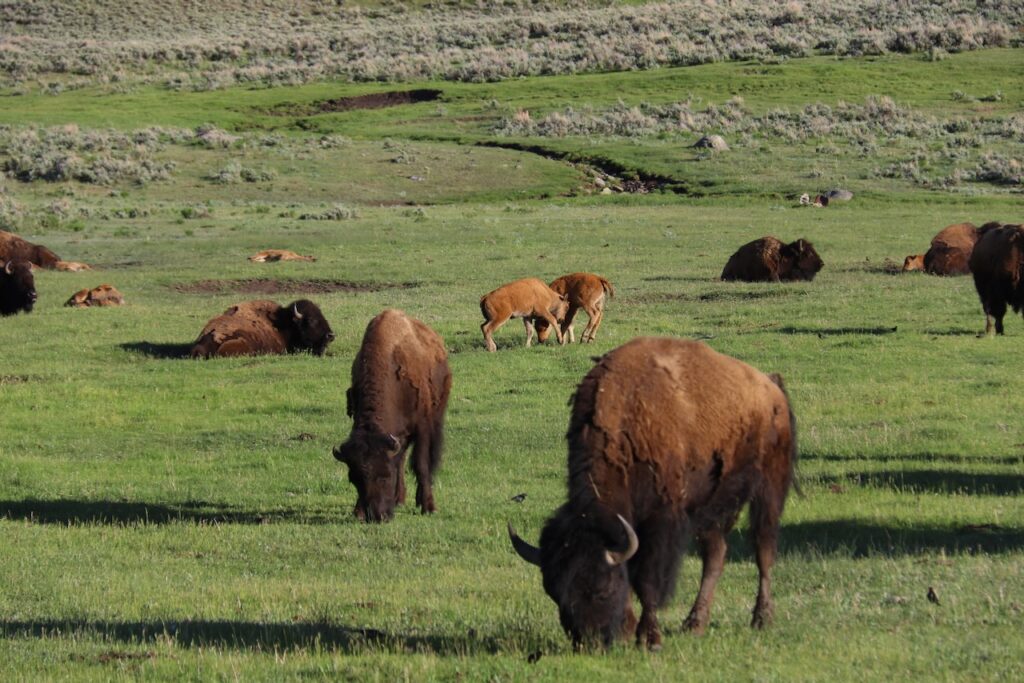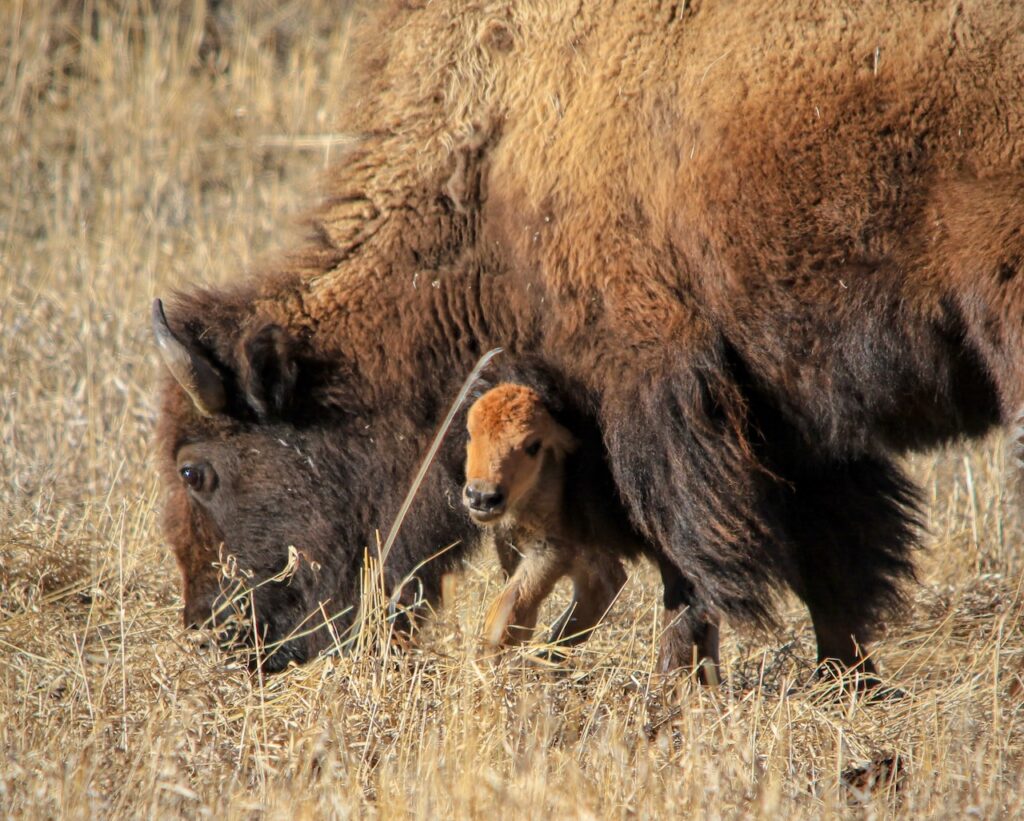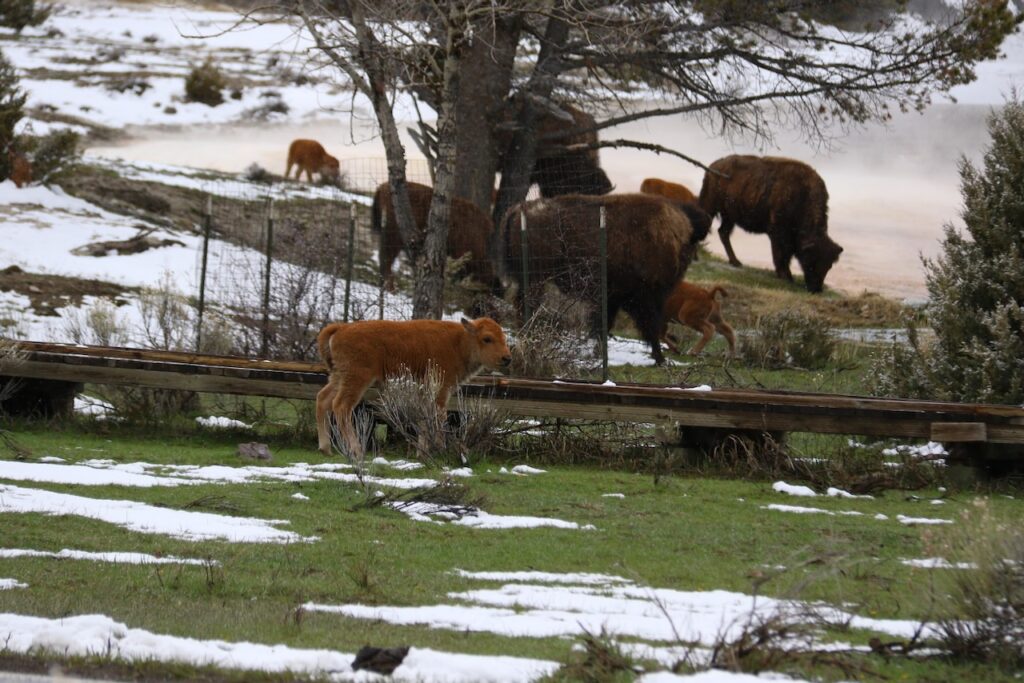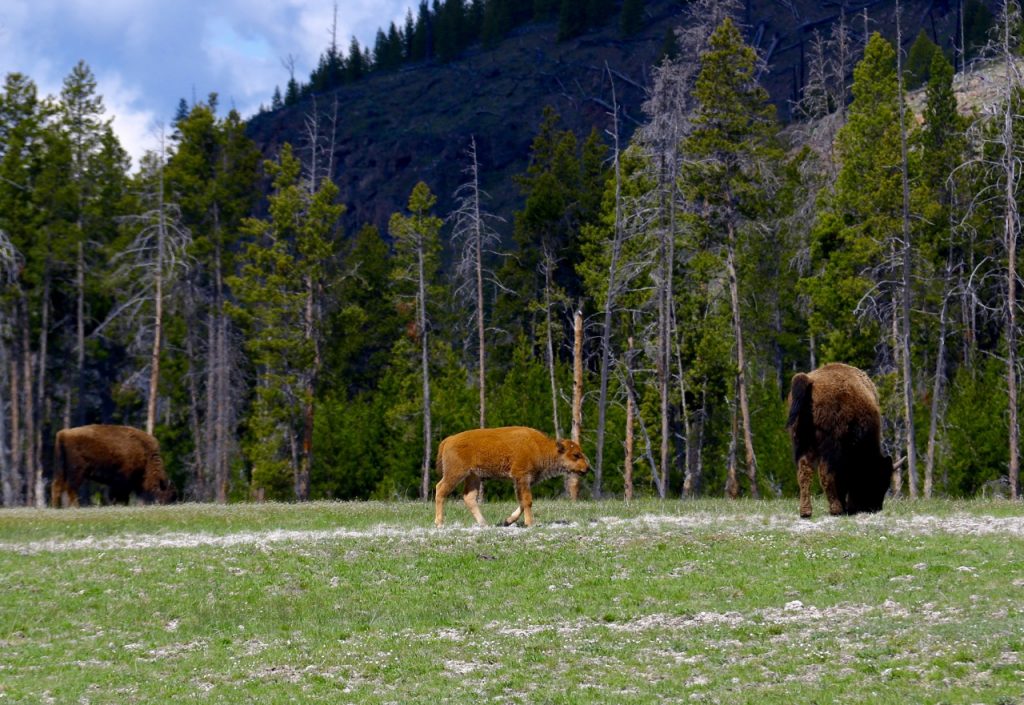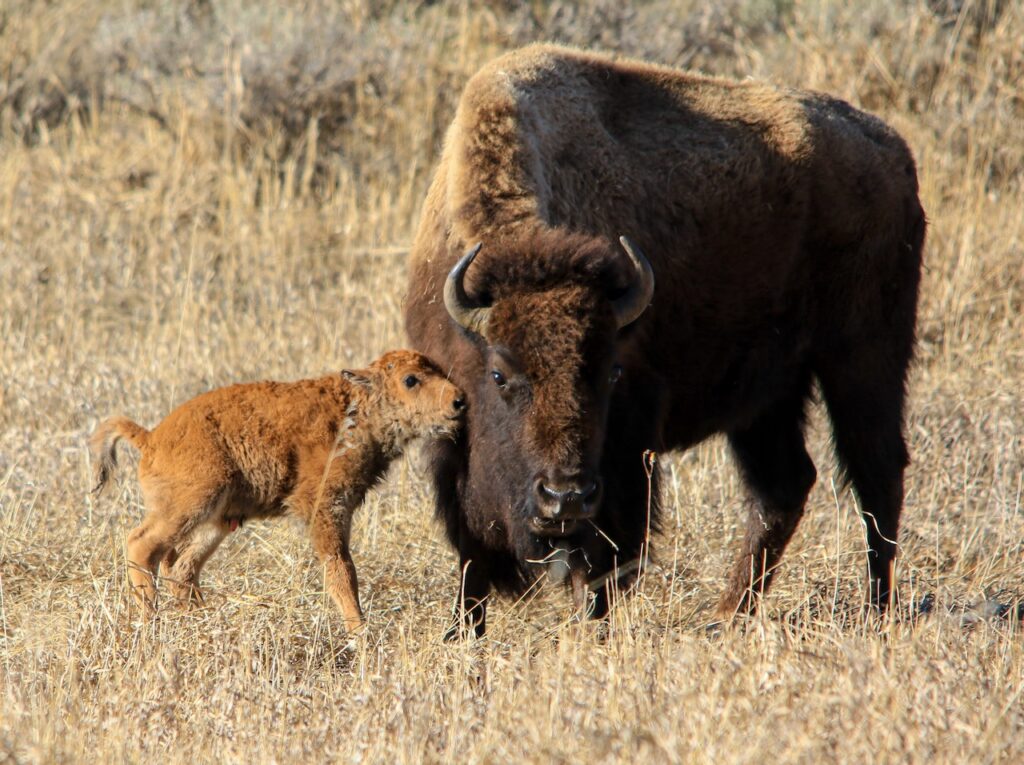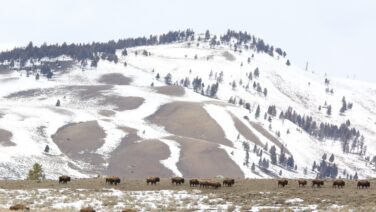As the vibrant hues of spring start to paint the canvas of Yellowstone National Park, a captivating spectacle unfolds—the arrival of newborn bison. Frolicking, napping, nursing, and grazing in the warmth of the sun, seeing the newborn bison is an experience that shouldn’t be missed.
Bison are among the park’s most iconic inhabitants and these majestic creatures symbolize the resilience and beauty of the American West. Drawing visitors from far and wide to witness this seasonal miracle, those fortunate enough to see a newborn bison in the wilds of Yellowstone have a moment they will never forget. It is easy to think that witnessing the birth of new bison in Yellowstone is normal, but this experience was nearly taken away from us.
The Bison: Iconic Symbols and Conservation Success
Bison are not only iconic symbols of Yellowstone but also integral components of its complex ecosystem. Through their grazing habits, bison shape the landscape, creating diverse habitats that support a myriad of plant and animal species. Their role as ecosystem engineers fosters biodiversity and promotes the health and resilience of Yellowstone’s natural communities, making them indispensable stewards of the land.
Once driven to the brink of extinction by hunting, poaching, and habitat loss, bison populations have rebounded remarkably, thanks to concerted conservation efforts. Today, Yellowstone’s herds serve as a testament to the power of preservation and the enduring legacy of wildlife conservation.
Yellowstone National Park stands as a living testament to the enduring presence of the bison in the United States. It remains the sole bastion in the lower 48 states where bison have roamed freely since prehistoric times. However, this existence has not been without peril. During the 1800s, rampant market hunting for their hides and an attempt to remove the indigenous population’s food supply the bison of America became perilously close to extinction. By the turn of the 20th century, Yellowstone’s once-thriving herd had dwindled to a mere 24 wild bison, thanks in part to the nefarious activities of poachers. It was the US Army, acting as stewards of the park, who shielded these remaining bison from further harm.
In a bid to bolster the bison population, efforts were made to introduce individuals from private herds into northern Yellowstone. The Lamar Buffalo Ranch was one of the main spots where healing the bison population became a focus. Yet, even as the bison population began to recover, new challenges arose. Concerns about overgrazing led to culls targeting bison, alongside elk and pronghorn, throughout the park.
The cessation of herd reductions inside the park in 1968 offered a reprieve, but the dawn of the 21st century ushered in fresh obstacles. Mounting numbers and disputes over migration into Montana reignited the debate over bison management, prompting renewed efforts to control the population through targeted reductions as soon as bison leave the park.
For a full and detailed history of the bison population of Yellowstone, check out this amazingly detailed paper.
Springtime Arrival: Witnessing the Miracle of Birth
As winter relinquishes its grasp on Yellowstone’s rugged landscape, expectant bison mothers prepare for the arrival of their calves. From late April through June, the meadows and valleys of Yellowstone become birthing grounds, where mothers give birth to their offspring amid the backdrop of snow-capped peaks and verdant meadows. These newborns, affectionately known as “red dogs” for their rust-colored coats, embody the promise of renewal and the cycle of life in the heart of the wilderness. Taking their first wobbly and awkward steps a few minutes after being born, they have no idea what is in store for them.
Challenges and Triumphs
Life for a newborn bison in Yellowstone is fraught with challenges from the moment of birth. Harsh weather, formidable predators such as wolves and bears, and the rugged terrain all pose threats to their survival. The park estimates that roughly 25% of bison calves born in the spring will die. It doesn’t get better for them if they make it through the summer or even the first winter. According to a study by Yellowstone National Park, nearly half the calves that survived into their first winter died before 2.5 years of age. While sad, those deaths benefit other animals in the park by feeding everything from bears and wolves to birds and even insects.
You may see a newborn bison being eaten by wolves, or bears, or even drowning or dying for a myriad of reasons. You may also see, through the unwavering devotion of their mothers and the protective vigilance of the herd, many calves overcoming these obstacles and flourishing in their untamed habitat. Their resilience serves as a testament to the indomitable spirit of wildlife in Yellowstone’s wilderness.
Experiencing Newborn Bison Season: Tips for Visitors
For visitors eager to witness the magic of newborn bison season, careful planning and respect for park regulations are essential. It’s crucial to maintain a safe distance (25 yards when outside of a car) from bison and refrain from approaching or feeding them. Do not try to pet them. Just be smart and follow the park’s rules and regulations for wildlife watching and you’ll be fine. By doing this, you are ensuring visitor safety and the well-being of the animals. By embracing responsible wildlife viewing practices, visitors can create lasting memories while preserving the integrity of Yellowstone’s natural heritage.
Where can you see newborn bison? The best chances for this will be Lamar and Hayden Valley, but newborn bison can be spotted nearly anywhere in the park. I have seen newborns near Mammoth, Old Faithful, Grand Prismatic, up at Norris, and even near Lewis Lake. If you want to know my favorite and time-tested locations for seeing bison and the other animals of Yellowstone, please consider picking up a copy of my wildlife-watching guidebook.
A Bit More About Bison
Male bison, also known as bulls, can tip the scales at a whopping 2,000 pounds, while their female counterparts, cows, typically weigh up to 1,000 pounds. These majestic creatures boast a lifespan of 12 to 15 years on average, though some have been known to reach the venerable age of 20. Their diet primarily consists of grasses and sedges, sustaining their formidable bulk.
Come late July through August, the bison engage in their annual mating rituals, culminating in the birth of a single calf in late April or May. Despite their seemingly lumbering build, bison are surprisingly agile and can reach speeds of up to 30 miles per hour when the need arises. Their temperament can veer towards aggression, particularly during mating season or when protecting their young.
As always, stay at least 25 yards away from bison at all times. Never approach them and if one starts walking toward you, walk away from it.


